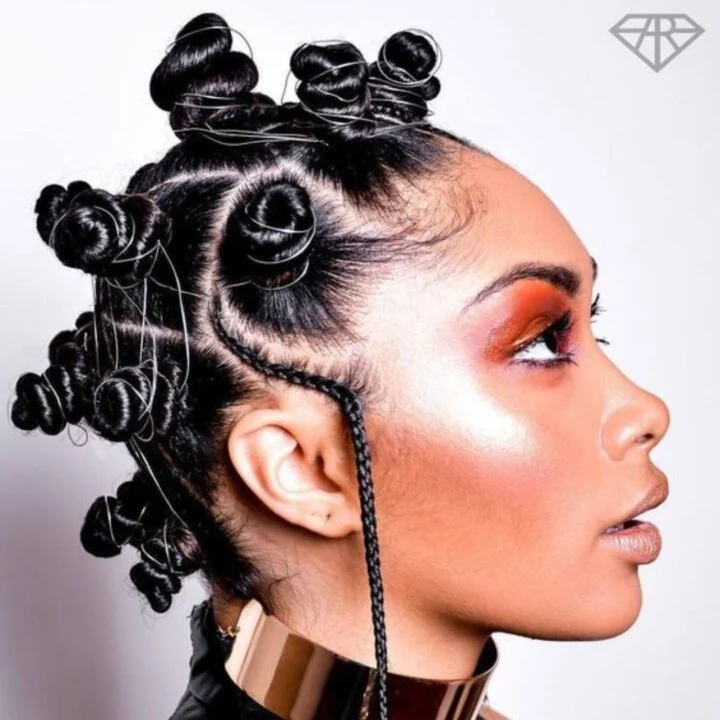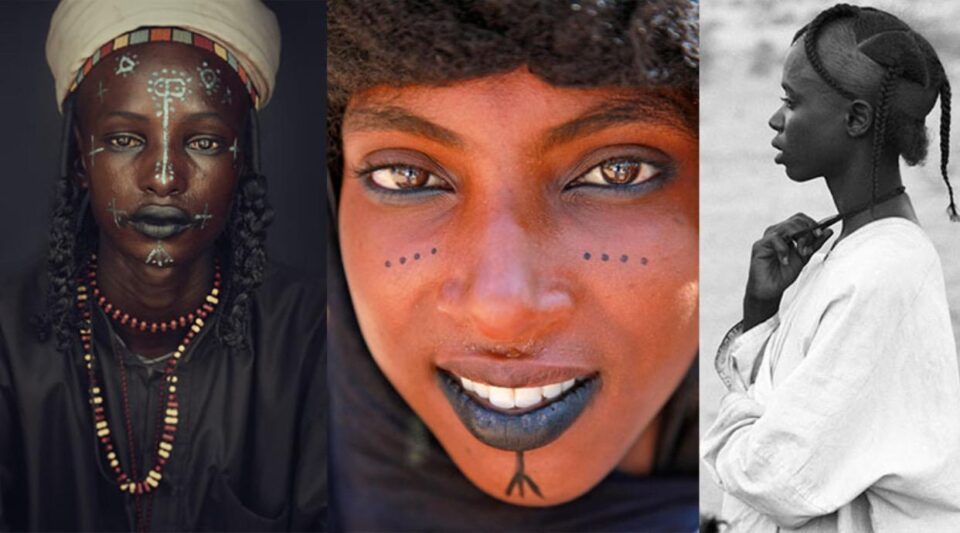Here’s an in-depth overview of braids Fulani Bantu Knots—a combined style that merges the distinct elements of Fulani braids and Bantu knots into one bold, culturally rich look.
Table of Contents
African Fulani Braids
- Originally worn by the Fulani (Fula) people across West Africa—spanning Nigeria, Senegal, Mali, Guinea, Niger, Cameroon, and beyond.
- Characterized by a central straight braid (or several), with smaller cornrow braids directed toward the face and down the sides. Often decorated with beads, cowrie shells, or silver/bronze coins as symbols of beauty, wealth, and social lineage.
- Traditionally, braid patterns conveyed social status, marital state, or ethnic identity, making hair a living cultural language.
- Today it’s a protective hairstyle, often lasting 3–6 weeks when well maintained, taking 4–6 hours to install in salons.
Bantu Knots
- Originating among Zulu and other Bantu-speaking ethnic groups in Southern Africa, often called Zulu knots or Nubian knots.
- The style involves sectioning natural Afro-textured hair, twisting each part, and coiling it into small bun-like knots close to the scalp—offering both protection and striking visual statement.
- Bantu knots symbolize heritage, resilience, and pride. They became popular during the Black Pride movements of the 1960s and continue to be celebrated in contemporary hair culture.
Braids Fulani Bantu Knots: The Combined Style
- This fusion style weaves together the sleek cornrow structure of Fulani braids with top knots or half-up Bantu-style buns, often accentuating the front or crown of the head.
- It offers a striking contrast between structured braids and sculptural knots, blending both West African and Southern African traditions into a bold, culturally rich aesthetic.
- Increasingly popular in natural hair communities and among influencers and stylists globally.
Cultural Significance & Modern Meaning of Fulani Braids Bantu Knots
- Both styles are classified as protective hairstyles, designed to minimize manipulation, retain moisture, and reduce breakage—supporting hair health on tightly coiled textures.
- They are inherently cultural expressions, rooted in centuries of African tradition, now adapted and celebrated worldwide—but also vulnerable to cultural appropriation when worn without acknowledgment of origin.
- Wearing them today often signals pride, resilience, and connection to ancestral traditions in the African diaspora.
Care Tips & Maintenance
- To keep Fulani braids looking fresh:
- Moisten the scalp with leave-in conditioners or oils.
- Wrap the hair nightly with a silk or satin scarf or bonnet.
- Avoid overly tight tension that could lead to traction alopecia.
- Ideally rest your hair 2–3 weeks between protective styles.
- To style and maintain Bantu knots:
Summary Table
| Style | Origin & Culture | Key Features | Meaning & Purpose |
|---|---|---|---|
| Fulani Braids | West African Fulani people | Cornrow braids with center braid, bead accents | Identity, status, protective style |
| Bantu Knots | Southern African Bantu group (Zulu) | Coiled knots across scalp | Heritage, strength, protective form |
| Fulani + Bantu Fusion | African hair traditions combined | Braided structure topped with Bantu knots | Bold cultural style statement |
These styles are more than just beautiful—they’re living traditions, rich with meaning and rooted in generations of African heritage.
Whether you’re wearing them to honor culture, protect your hair, or express creativity, they carry profound symbolism and timeless elegance.

Are Fulani Bantu?

No, the Fulani are not Bantu.
Here’s the Key Distinction:
The Fulani (also called Fula, Fulbe, or Peul) are a non-Bantu, West African ethnic group with roots in the Sahel and West Africa—especially countries like Nigeria, Mali, Guinea, Senegal, and Cameroon.
Photo credits: Coils & Glory, The African History